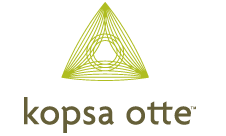We have compiled a checklist of actions based on current tax rules that may help you save tax dollars if you act before year-end. Not all actions will apply in your particular situation, but you will likely benefit from many of them. We can narrow down the specific actions that you can take once we meet with you to tailor a particular plan. In the meantime, please review the following list and contact us at your earliest convenience so that we can advise you on which tax-saving moves to make.
Year-End Tax-Planning Moves for Businesses & Business Owners
□ Businesses should consider making expenditures that qualify for the business property expensing option. For tax years beginning in 2011, the expensing limit is $500,000 and the investment ceiling limit is $2,000,000. And a limited amount of expensing may be claimed for qualified real property. However, unless Congress changes the rules, for tax years beginning in 2012, the dollar limit will drop to $139,000, the beginning-of-phase-out amount will drop to $560,000, and expensing won't be available for qualified real property. The generous dollar ceilings that apply this year mean that many small and medium sized businesses that make timely purchases will be able to currently deduct most if not all their outlays for machinery and equipment. What's more, the expensing deduction is not prorated for the time that the asset is in service during the year. This opens up significant year-end planning opportunities.
□ Businesses also should consider making expenditures that qualify for 100% bonus first-year depreciation if bought and placed in service this year. This 100% first-year write-off generally won't be available next year unless Congress acts to extend it. Thus, enterprises planning to purchase new depreciable property this year or the next should try to accelerate their buying plans, if doing so makes sound business sense.
□ If you are self-employed and haven't done so yet, set up a self-employed retirement plan.
□ Depending on your particular situation, you may also want to consider deferring a debt-cancellation event until 2012, and disposing of a passive activity to allow you to deduct suspended losses.
□ If you own an interest in a partnership or S corporation, you may need to increase your basis in the entity so you can deduct a loss from it for this year.
These are just some of the year-end steps that can be taken to save taxes.
Again, by contacting us, we can tailor a particular plan that will work best for you.


